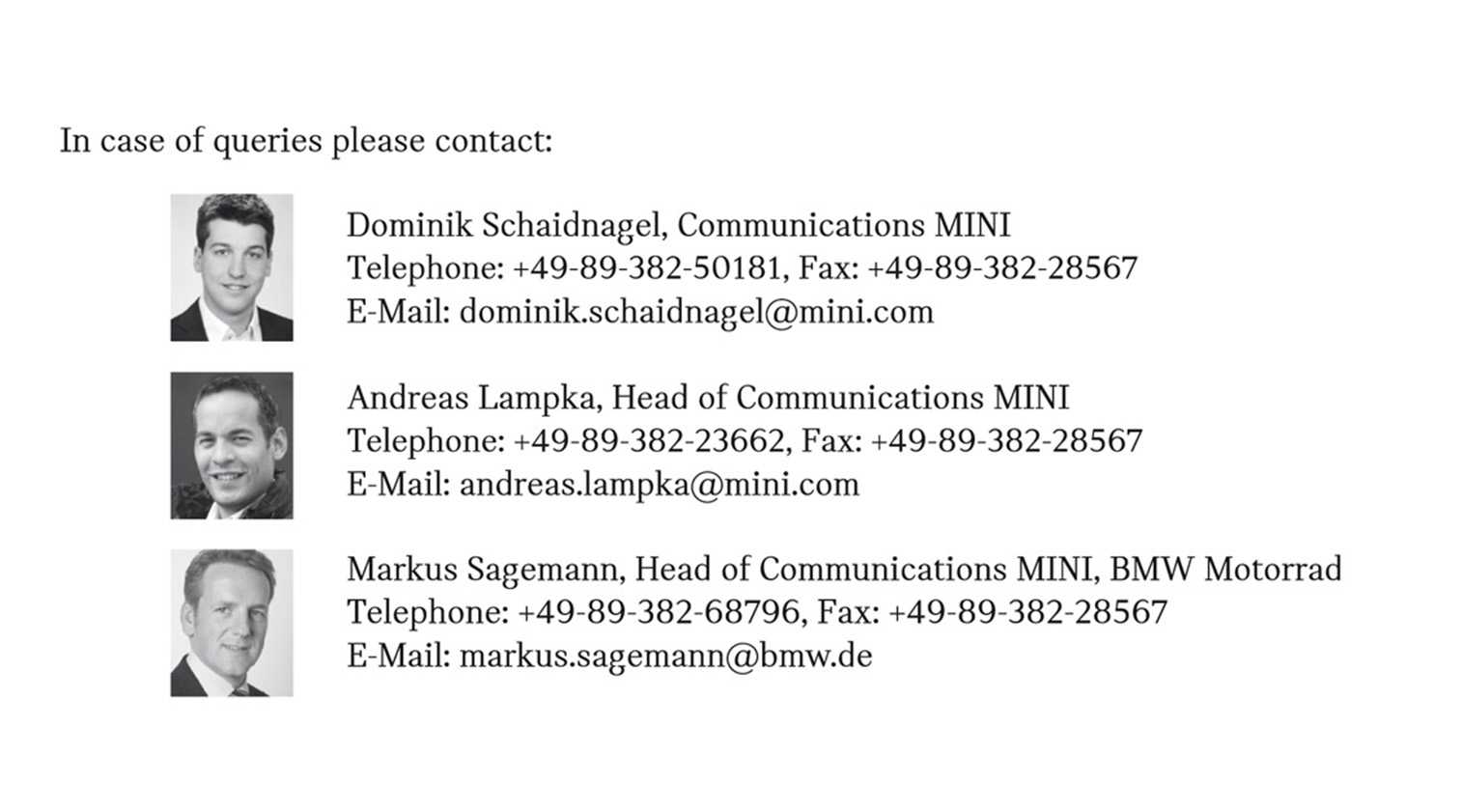PressClub Poland · Article.
Trzy miliony MINI
Fri Dec 09 09:45:46 CET 2016 Informacje prasowe
Fabryka MINI w Oxfordzie wyprodukowała 3 miliony MINI od 2001 roku - Liczbę tę osiągnięto, gdy z linii produkcyjnej zjechał MINI John Cooper Works Clubman - 80% MINI produkowanych w Oxfordzie przeznaczonych jest na globalny eksport - Fabryka osiągnęła ten wynik w roku, w którym BMW obchodzi swoje 100-lecie oraz w 15. roku produkcji MINI.
Press Contact.
Hubert Fronczak
BMW Group
Tel: +48-728-874-121
send an e-mail
Author.
Hubert Fronczak
BMW Group
Munich/Oxford. Plant Oxford today celebrates the
three millionth MINI to roll off the assembly line since production
began back in 2001. The three millionth Oxford-built MINI is a John
Cooper Works Clubman - the first model to combine the latest John
Cooper Works performance enhancements and a new ALL4 all-wheel drive
system.
From around 300 cars a day in 2001 to around 1,000 built to
order cars today, the 4,500 strong workforce at Oxford produce one new
MINI almost every minute. 80 per cent of MINIs built here are exported
to more than 110 markets across the world. Since we began building
MINIs back in 2001 the car has proven hugely popular with customers
right around the world. The passion and commitment that everyone here
at the plant has for building a high-quality product is central to
that success. The 3 millionth Oxford-built MINI is a remarkable
achievement.
Sales of MINI, both in the UK and internationally, have gone
from strength to strength over the last 15 years. In its first year
nearly 40,000 MINIs were sold worldwide. By 2015 this number had risen
to nearly 340,000.Three UK plants have a part to play in its
production - Hams Hall near Birmingham makes engines, Swindon produces
body pressings and sub-assemblies for MINI, and this all comes
together at Oxford with body shell production, paint and final
assembly. Together these plants have helped to generate and sustain
employment for thousands of people directly and indirectly though the
wider supply chain and retailers.
Since 2000 £1.75 billion has been invested by BMW Group at the
three plants and at Oxford this has included a state-of-the-art
paintshop, a high-technology body building facility, a new final
assembly area, a new logistics centre, Quality and Engineering Centre
and the MINIcademy, where the plant’s apprentices are trained.
Oxford, the heart and home of MINI production, has a rich motor
manufacturing history. It has been building cars since 1913 when the
great designer, entrepreneur and philanthropist William Morris (later
Lord Nuffield), produced its first car, a “Bullnose” Morris, near
today’s present state-of-the-art MINI production facility.
The classic Mini, designed by Sir Alec Issigonis and launched in
1959, revolutionised the automotive world and was produced at Oxford
until 1968 with a peak output of 94,889 cars during 1966-7.
Models built at Oxford today include three and five door MINIs,
the MINI Clubman and its first all-wheel drive All4 model – and the
high-performance MINI John Cooper Works.
The latest news and insights from the plant can be found via the
Instagram page @miniplantoxford which can be accessed using the
following link: https://www.instagram.com/miniplantoxford/.
For further details on official fuel consumption figures, official specific CO2 emissions and power consumption of new cars, please refer to the "Manual on fuel consumption, CO2 emissions and power consumption of new cars”, available at all sales outlets, from Deutschen Automobil Treuhand GmbH (DAT), Hellmuth-Hirth-Str. 1, 73760 Ostfildern-Scharnhausen and at http://www.dat.de/angebote/ verlagsprodukte/leitfaden-kraftstoffverbrauch.html. Manual CO2 (PDF ‒ 2.7 MB)
